Discover 7 proven strategies to prevent fetal distress and promote a healthy pregnancy. Learn about causes, symptoms, and effective treatments to safeguard both mother and baby.
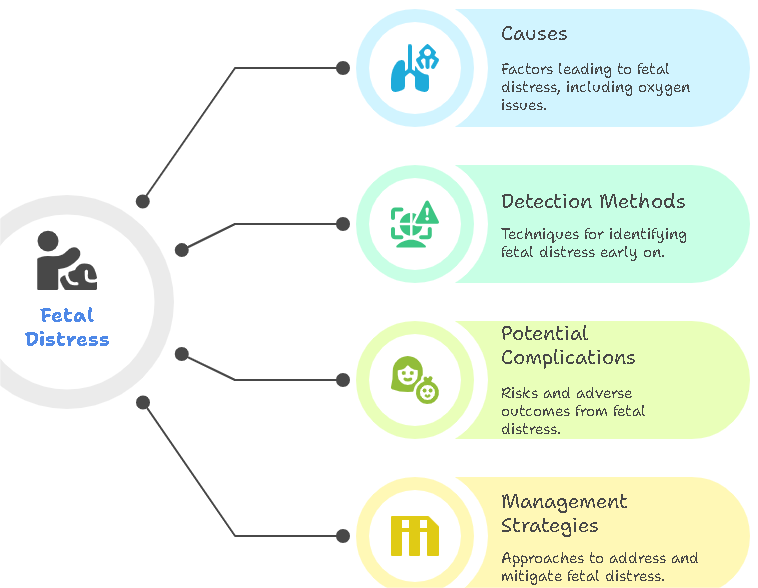
Understanding Fetal Distress: Causes, Symptoms, Diagnosis, and Treatment Options
Fetal distress is a term used to describe signs that suggest a fetus is not well or is in some form of distress during pregnancy or labor. It is a serious condition that requires immediate medical attention to ensure the safety of both the fetus and the mother. This article provides an in-depth exploration of fetal distress, including its causes, symptoms, diagnostic methods, and treatment options, in order to help you understand this critical aspect of maternal and fetal health.
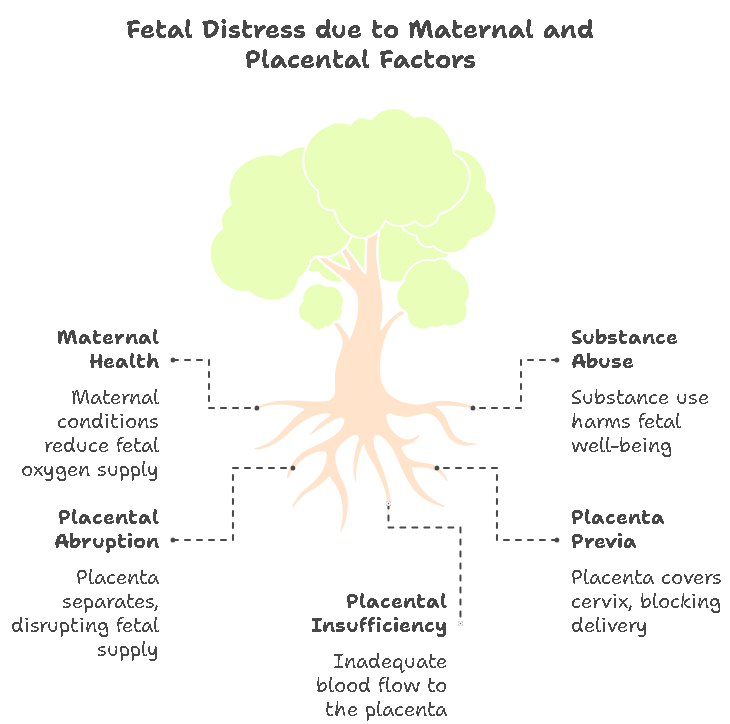
What is Fetal Distress?
Fetal distress refers to abnormal conditions or signs observed in a fetus that indicate it is experiencing difficulties, often affecting its oxygen supply. The fetus’s well-being is vital for a healthy pregnancy, and fetal distress can signal a risk of complications that may require medical intervention.
Causes of Fetal Distress
There are numerous reasons why a fetus might experience distress, ranging from complications in pregnancy to issues during labor. Understanding these causes can aid in identifying the condition early, thus improving the chances of a successful outcome.
- Placental Insufficiency
One of the primary causes of fetal distress is placental insufficiency, a condition where the placenta fails to deliver enough oxygen and nutrients to the fetus. This can be caused by conditions like high blood pressure, preeclampsia, or diabetes, and can ultimately lead to a decrease in the fetus’s oxygen supply, resulting in distress. - Umbilical Cord Problems
Another leading cause of fetal distress is umbilical cord complications. These may include cord prolapse, where the umbilical cord slips into the birth canal before the baby, or cord compression, where the cord is squeezed during contractions, leading to a decrease in oxygen flow. Such conditions can cause a drop in the baby’s heart rate, a key indicator of distress. - Infections
Certain infections, such as chorioamnionitis (an infection of the amniotic sac) or urinary tract infections, can lead to an increase in fetal distress. These infections can affect the overall health of the mother and disrupt the fetus’s ability to get adequate oxygen. - Maternal Health Conditions
Chronic health conditions in the mother, such as diabetes, hypertension, or heart disease, can also increase the risk of fetal distress. These conditions can cause abnormal blood flow to the placenta, which can affect the baby’s oxygen levels and lead to distress. - Premature Rupture of Membranes
When the amniotic sac ruptures prematurely, it can lead to fetal distress as the baby may no longer be adequately cushioned in the fluid-filled environment. This can also expose the fetus to potential infections and reduce the oxygen supply.
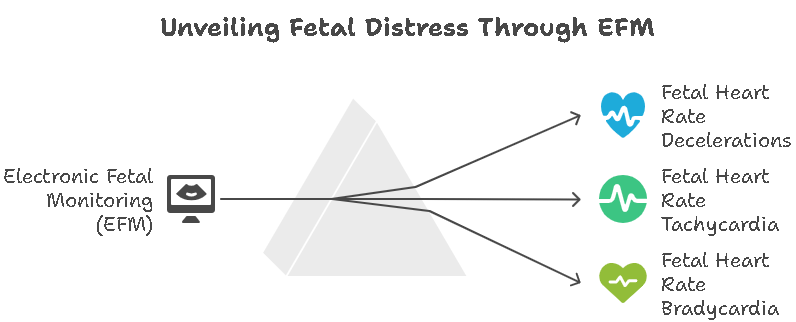
Signs and Symptoms of Fetal Distress
Recognizing the signs and symptoms of fetal distress is crucial for timely intervention. These symptoms often manifest through changes in the fetal heart rate, the mother’s condition, or other clinical signs. Key symptoms include:
- Abnormal Fetal Heart Rate
One of the primary indicators of fetal distress is an abnormal fetal heart rate. During labor, fetal heart rate monitoring can detect signs such as:
Tachycardia (an elevated heart rate over 160 beats per minute)
Bradycardia (a heart rate lower than 110 beats per minute)
Variable decelerations, which can occur when the umbilical cord is compressed
Any deviations from the normal range should be closely monitored.
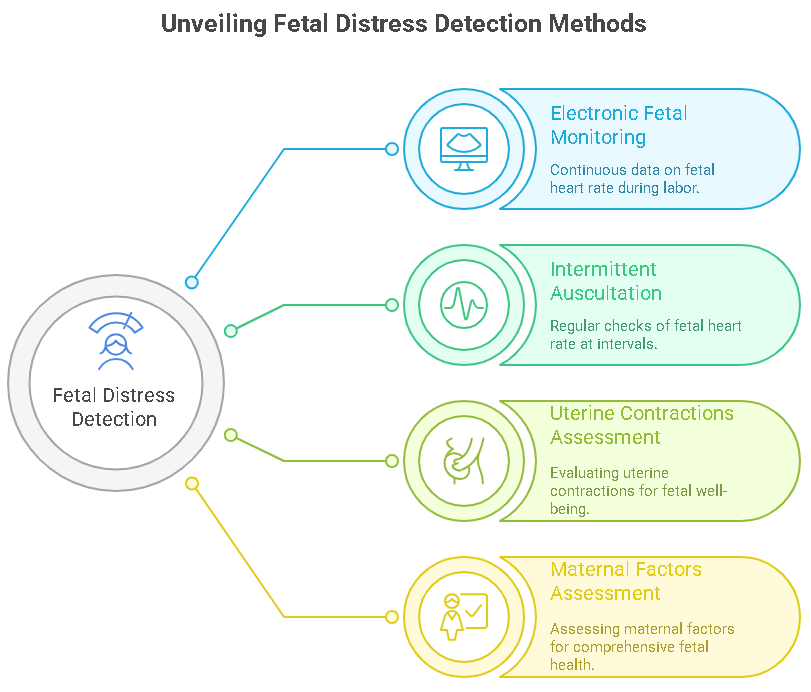
- Changes in Maternal Health
Mothers may experience signs of distress too, including:
Severe abdominal pain or cramping
Elevated blood pressure or signs of pre-eclampsia
High fever, especially when associated with infection
- Reduced Fetal Movement
A decrease in fetal movement is often a warning sign that the baby might be under stress. If the mother notices a significant reduction in fetal activity, immediate medical consultation is recommended.
How is Fetal Distress Diagnosed?
The diagnosis of fetal distress typically involves several diagnostic methods, all aimed at determining whether the fetus is receiving adequate oxygen and whether any immediate interventions are necessary. The following are the most common diagnostic techniques:
- Non-Stress Test (NST)
The Non-Stress Test is a commonly used method to monitor fetal heart rate patterns in response to fetal movements. This test provides insight into how well the fetus is tolerating the pregnancy, with abnormal results suggesting potential distress. - Biophysical Profile (BPP)
A biophysical profile combines ultrasound and fetal heart rate monitoring to evaluate the fetus’s condition. It assesses fetal movements, muscle tone, breathing movements, and amniotic fluid levels, giving a comprehensive view of fetal well-being. - Doppler Ultrasound
A Doppler ultrasound measures the blood flow in the umbilical cord and placenta. This helps determine whether the placenta is delivering sufficient oxygen to the fetus. Abnormal blood flow can indicate potential fetal distress. - Amniotic Fluid Index (AFI)
The amniotic fluid index is used to assess the amount of amniotic fluid in the uterus. Insufficient fluid can indicate placental issues, which may contribute to fetal distress.
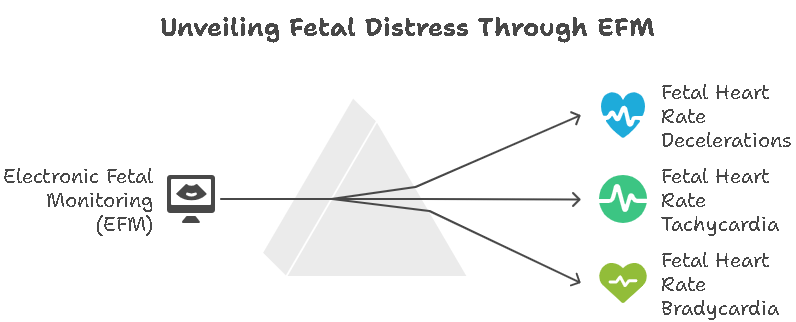
Treatment Options for Fetal Distress
The treatment for fetal distress depends on the severity of the condition and the stage of pregnancy. In some cases, immediate intervention is necessary to ensure the survival and health of both the fetus and the mother.
- Immediate Delivery
If fetal distress is diagnosed during labor and delivery, emergency delivery may be the best course of action. This can be done either through cesarean section or vaginal delivery, depending on the circumstances. - Oxygen Therapy for the Mother
If placental insufficiency or other causes are suspected to be affecting fetal oxygen levels, the mother may be given oxygen therapy. This can help increase oxygen levels in the bloodstream and improve fetal oxygenation. - Medication
If maternal health issues like high blood pressure or infections are contributing to fetal distress, medications such as antibiotics, antihypertensives, or steroids may be prescribed to manage the condition and improve fetal well-being. - Monitoring and Supportive Care
In cases where the distress is not severe, constant monitoring of fetal heart rate and maternal health may be sufficient. If necessary, supportive care measures, such as hydration or the administration of medication to improve uterine contractions, may be employed.
Prevention and Reducing the Risk of Fetal Distress
While some causes of fetal distress cannot be prevented, there are several steps that expectant mothers can take to reduce their risk. These include:
- Regular Prenatal Care
Frequent prenatal visits allow healthcare providers to monitor both maternal and fetal health, helping to identify potential risks before they become severe. - Managing Pre-existing Health Conditions
Mothers with pre-existing conditions such as diabetes, hypertension, or thyroid disorders should work closely with their healthcare provider to manage these conditions throughout pregnancy. - Proper Nutrition and Hydration
Maintaining a healthy diet and staying well-hydrated can support the placenta’s health and improve fetal outcomes. - Avoiding Smoking and Alcohol
Both smoking and alcohol consumption are linked to poor fetal outcomes, including increased risk of fetal distress. Avoiding these substances during pregnancy can significantly reduce the likelihood of complications.
Conclusion
Fetal distress is a critical condition that requires immediate attention and intervention to protect the health and well-being of both mother and baby. Understanding the causes, symptoms, diagnostic methods, and treatment options for fetal distress can help ensure that timely and appropriate action is taken. By staying informed and seeking regular prenatal care, expectant mothers can increase their chances of a healthy pregnancy and a safe delivery.
DISCLAIMER:
“Dear Readers,
We, the authors, are seasoned medical practitioners with over 25 years of collective experience. The care tips and suggestions provided in this content are intended to offer general advice for promoting health. However, it is crucial to understand that every individual is unique, and what works for one person may not be suitable for another.
While our recommendations focus on natural and general care practices, we strongly advise you to consult with your family doctor or a qualified healthcare professional before incorporating any specific medications, chemicals, or advanced treatments into your care routine. Your family doctor can provide personalized advice based on your medical history, type, and potential sensitivities.
Our goal is to empower you with knowledge for healthier you, but individualized medical guidance is paramount for ensuring safe and effective care practices. Always prioritize your health and seek professional advice for any concerns.
Best regards,
dr.MAAS
director digital healthcare
COSMOCARE
Stay curious, stay informed, healthcarebytes from RSB will continue…The MISKEAN WAY because with success comes RESPONSIBILITY.
a silent poetry that captivates the soul without uttering a single word.
preventadisease@gmail.com
powerofprevention@outlook.com
